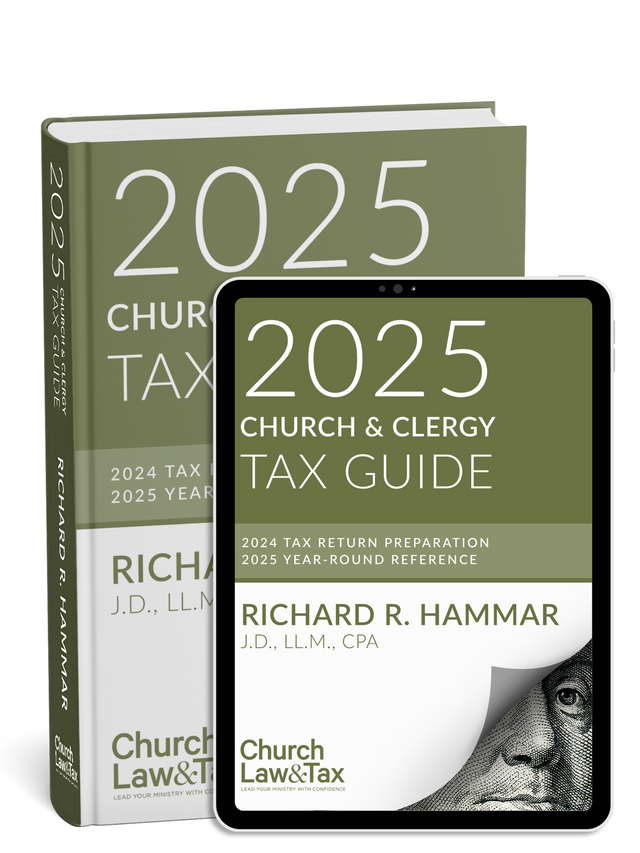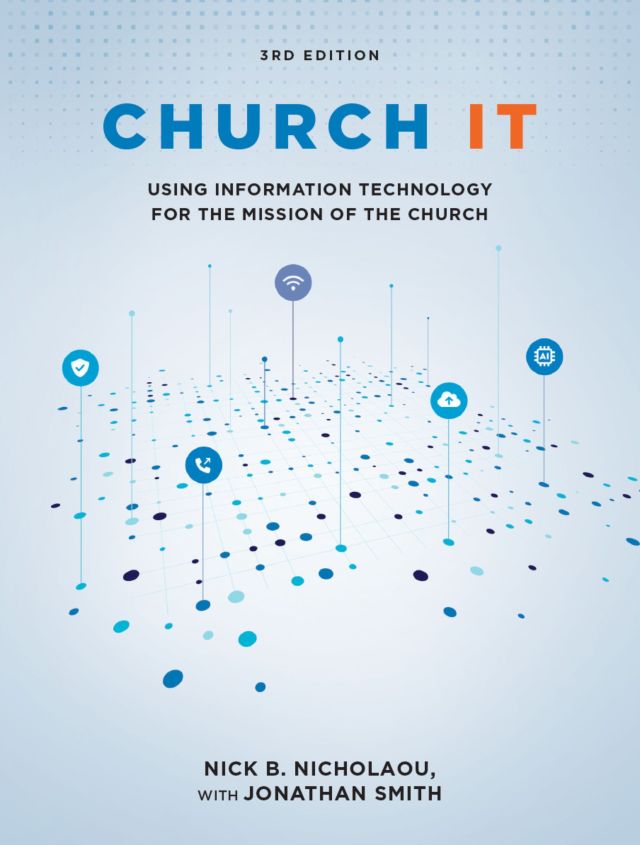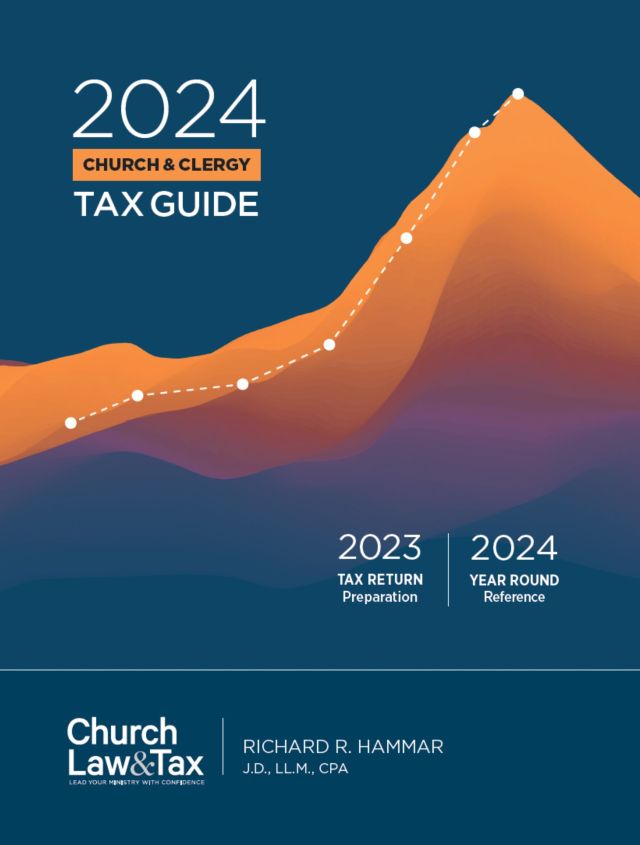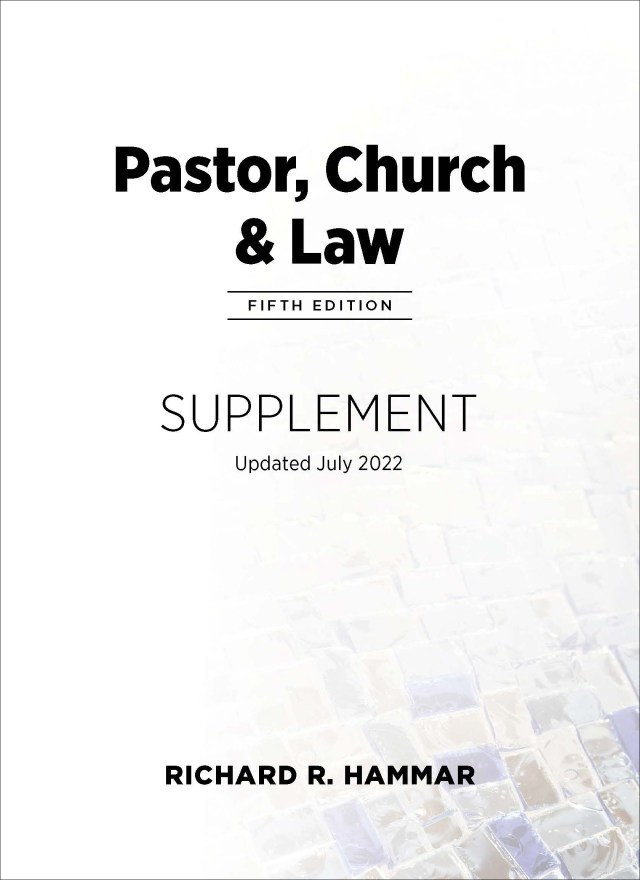Key point 7-20.4. A church may be legally responsible for assaults occurring on its premises if similar assaults occurred on or near the premises in the recent past and the church failed to take reasonable precautions.The California Supreme Court ruled that a university has a legal duty to protect students from foreseeable violence during curricular activities.
A male university student (the “assailant”) began experiencing problems with other students in both classroom and residence hall settings. For example:
• He informed a professor that he was “angered” by “offensive” remarks from other students during a final examination and “outraged” because their comments had affected his performance.
• He claimed to have heard another professor calling him “troubled” and “crazy,” among other things.
• He complained about mistreatment by fellow dormitory residents. In a three-page letter to the Dean of Students, he alleged a female resident had repeatedly made “unwelcomed verbal sexual advances” toward him, and others had spread rumors and “accusations of a sexual nature about him throughout the entire student body.”
• He claimed the residents frequently disrupted his sleep, called him “stupid,” and eavesdropped on his phone calls. Not only had he been “made the target” of the residents’ “teasing,” but he also “received an immense amount of unwanted attention” around campus. He warned that if the university failed to discipline the responsible parties, the matter would likely “escalate into a more serious situation,” and he would “end up acting in a manner that will incur undesirable consequences.”
• He was expelled from the university dormitories after assaulting a student on a baseless charge.
The assailant began to receive counseling at the campus counseling center. Though he denied wanting to hurt himself or others, he continued to report auditory hallucinations and paranoid thoughts. He threw away prescribed antipsychotic medication. A counselor diagnosed schizophrenia and urged him to see a psychiatrist.
One day, while doing classwork in a chemistry laboratory, the assailant, without warning or provocation, stabbed a fellow student in the chest and neck with a kitchen knife. The victim was taken to the hospital with life-threatening injuries but ultimately survived. When campus police arrived, the assailant admitted he had stabbed someone and explained that the other students had been teasing him. He pleaded not guilty by reason of insanity to a charge of attempted murder, and was admitted to a psychiatric hospital and diagnosed with paranoid schizophrenia.
The victim sued the university. She claimed that the university had a special relationship with her as an enrolled student, which entailed a duty “to take reasonable protective measures to ensure her safety against violent attacks and otherwise protect her from reasonable foreseeable criminal conduct, to warn her as to such reasonable foreseeable criminal conduct on its campus and in its buildings, and to control the reasonably foreseeable wrongful acts of third parties and other students.” She alleged that the university breached this duty because, although aware of the assailant’s “dangerous propensities,” it failed to warn or protect her or to control the assailant’s foreseeably violent conduct.
A trial court rejected the university’s motion to dismiss the case, and the university appealed. A state appeals court reversed the trial court’s ruling, and dismissed all claims. The victim appealed to the state supreme court, which reversed the appellate court’s ruling and ordered the case to proceed to trial.
The supreme court’s ruling
The supreme court began its opinion by noting that “in general … one owes no duty to control the conduct of another, nor to warn those endangered by such conduct,” and that “a person who has not created a peril is not liable in tort merely for failure to take affirmative action to assist or protect another unless there is some relationship between them which gives rise to a duty to act.”
In short, “whether [the university] was negligent in failing to prevent the assailant’s attack depends first on whether a university has a special relationship with its students that supports a duty to warn or protect them from foreseeable harm.”
The supreme court noted that the following special relationships are recognized by the Restatement 3rd Torts (a respected restatement of the law) that “may support a duty to protect against foreseeable risks”:
- common carrier and customer
- innkeeper and customer
- business or landowner and invited guests
- landlord and tenants
- a guard with those in his or her custody
- an employer with its employees, and
- a school with its students.
The Restatement does not exclude colleges from the school-student special relationship. However, it cautions that reasonable care varies in different school environments, with substantially different supervision being appropriate in elementary schools as opposed to colleges. State courts have reached different conclusions about whether colleges owe a special relationship-based duty to their students. The California Supreme Court noted that it had not previously addressed the question. It noted:
Relationships that have been recognized as “special” share a few common features: Generally, the relationship has an aspect of dependency in which one party relies to some degree on the other for protection… . The corollary of dependence in a special relationship is control. Whereas one party is dependent, the other has superior control over the means of protection. “[A] typical setting for the recognition of a special relationship is where ‘the plaintiff is particularly vulnerable and dependent upon the defendant who, correspondingly, has some control over the plaintiff’s welfare.'”
The Restatement authors observed over 50 years ago that the law has been “working slowly toward a recognition of the duty to aid or protect in any relation of dependence or of mutual dependence.”
The court noted that in a previous case it had ruled that a high school has a special relationship with students “arising from the mandatory character of school attendance and the comprehensive control over students exercised by school personnel, analogous in many ways to the relationship between parents and their children,” and this special relationship gives secondary school personnel “the duty to use reasonable measures to protect students from foreseeable injury at the hands of third parties acting negligently or intentionally” (emphasis added).
The court concluded that “postsecondary schools have a special relationship with students while they are engaged in activities that are part of the school’s curriculum or closely related to its delivery of educational services.” The court explained:
The college-student relationship thus fits within the paradigm of a special relationship. Students are comparatively vulnerable and dependent on their colleges for a safe environment. Colleges have a superior ability to provide that safety with respect to activities they sponsor or facilities they control.
The court cautioned that
many aspects of a modern college student’s life are, quite properly, beyond the institution’s control. Colleges generally have little say in how students behave off campus, or in their social activities unrelated to school. It would be unrealistic for students to rely on their college for protection in these settings, and the college would often be unable to provide it.
Having concluded that colleges and universities have a duty “to use reasonable measures to protect students from foreseeable injury at the hands of third parties acting negligently or intentionally,” the court explained foreseeability as follows:
Whether a university was, or should have been, on notice that a particular student posed a foreseeable risk of violence is a case-specific question, to be examined in light of all the surrounding circumstances. Any prior threats or acts of violence by the student would be relevant, particularly if targeted at an identifiable victim. Other relevant facts could include the opinions of examining mental health professionals, or observations of students, faculty, family members, and others in the university community. Such case-specific foreseeability questions are relevant in determining the applicable standard of care or breach in a particular case.
The court concluded:
We emphasize that a duty of care is not the equivalent of liability. Nor should our holding be read to create an impossible requirement that colleges prevent violence on their campuses. Colleges are not the ultimate insurers of all student safety. We simply hold that they have a duty to act with reasonable care when aware of a foreseeable threat of violence in a curricular setting. Reasonable care will vary under the circumstances of each case. Moreover, some assaults may be unavoidable despite a college’s best efforts to prevent them. Courts and juries should be cautioned to avoid judging liability based on hindsight.
The court sent the case back to the trial court for trial.
What This Means For Churches:
Most church leaders are concerned about the threat of armed assailants on church property. This concern is rooted both in a desire to protect parishioners and to mitigate a church’s legal risk for deaths or injuries that may occur. For this reason we monitor legal developments in this fast-evolving area of the law and apprise readers of notable cases having both a direct and indirect relevance to churches.
The California Supreme Court’s recent ruling is notable because rulings by this court often are trend-setters for the rest of the nation, and because the case directly addresses the important question of the liability of landowners for assaults on their premises. Note the following takeaway points.
First, the court noted that “special relationships” give rise to a duty “to use reasonable measures to protect against foreseeable injury at the hands of third parties acting negligently or intentionally.” Special relationships include any relationship that has “an aspect of dependency in which one party relies to some degree on the other for protection.” The “corollary of dependence in a special relationship is control. Whereas one party is dependent, the other has superior control over the means of protection. A typical setting for the recognition of a special relationship is where the plaintiff is particularly vulnerable and dependent upon the defendant who, correspondingly, has some control over the plaintiff’s welfare.”
This is a broad understanding of special relationship, and clearly applies to the relationship between a primary and secondary school and its students and, according to the California Supreme Court, to the relationship between a university and its students when engaged in activities that are “part of the school’s curriculum or closely related to its delivery of educational services.” And while the court did not address religious schools, its ruling likely will apply to religious primary, secondary, and postsecondary schools in California and in any state that follows the court’s reasoning, meaning that such schools may be deemed to have a duty “to use reasonable measures to protect against foreseeable injury at the hands of third parties acting negligently or intentionally.”
Second, what about churches? Does the California Supreme Court’s ruling mean that churches in that state, or in any other jurisdiction that follows the court’s ruling, have a legal duty “to use reasonable measures to protect against foreseeable injury at the hands of third parties acting negligently or intentionally”? The court did not address this issue. But note:
(1) No court has said that a special relationship exists between churches and their members (unless a counseling relationship exists), and so churches generally have no legal duty to protect members against armed assailants on that basis. (2) It is unlikely that a special relationship exists between a church and its members using the court’s analysis, since the requisite elements of dependency and vulnerability ordinarily do not exist. (3) Some courts have found landowners liable for assaults and other criminal acts on their premises if such acts were reasonably foreseeable, meaning that similar acts have occurred on or near the owner’s premises in the recent past. (4) Many church leaders believe that even if they do not have a legal duty to protect members against armed assailants, a moral or theological duty exists to safeguard human life.
Regents of the University of California v. Superior Court, 4 Cal. 5th 607 (Cal. 2018).




